Jacques-Louis David Famous Artworks and Where to Find Them
Continuing with our Famous French Paintings series, let me introduce Jacques-Louis David, who is considered one of the best Neoclassical artists of history.
Jacques-Louis David artworks stand as some of the best representations of neoclassical art, depicting the ideals of beauty, harmony, and moral virtue.
Born in Paris in 1748, Jacques-Louis David rose to prominence as a leading figure in the French Revolution and later became the official court painter of Napoleon Bonaparte.
Renowned for his masterful compositions and powerful storytelling, David’s paintings include some of the most iconic artworks in art history. Among his most famous creations are “The Death of Marat,” “Napoleon Crossing the Alps,” and “The Coronation of Napoleon.”
These monumental works not only reflect pivotal moments in history but also showcase David’s skill in capturing the grandeur and drama of the human experience.
Many of Jacques-Louis David paintings can be admired at the Louvre Museum in Paris, where they hold a place of honor among the museum’s vast collection. Considered some of the best paintings in the Louvre, David’s paintings continue to inspire awe and the admiration of the many visitors who arrive at the Louvre every day.
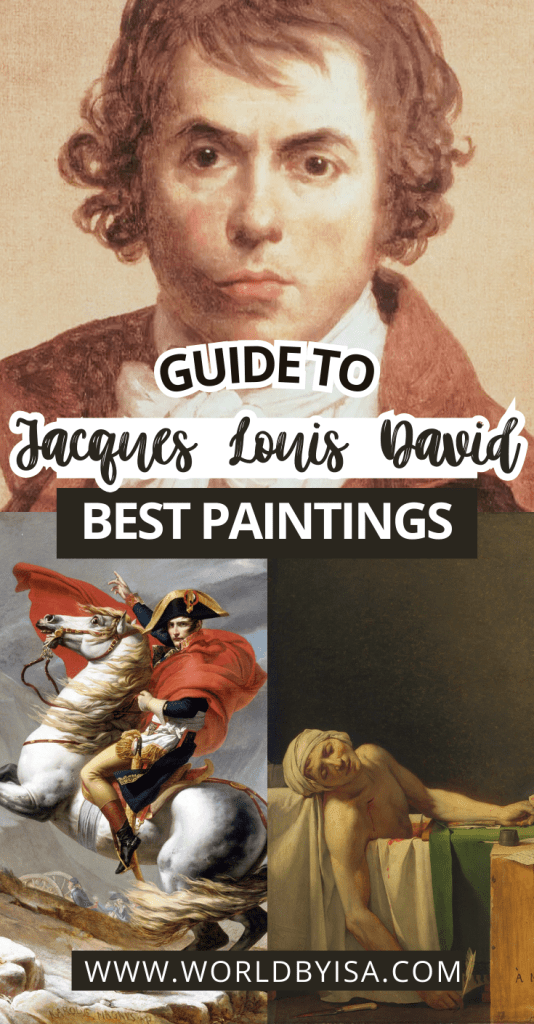
Biography
Jacques-Louis David was born on August 30, 1748, in Paris, France. He initially trained as a painter under Joseph-Marie Vien, a neoclassical artist, and later studied at the Royal Academy of Painting and Sculpture. David quickly gained recognition for his talent and commitment to neoclassical principles, which emphasized simplicity, clarity, and the emulation of classical Greek and Roman art.
He became closely associated with the ideals of the French Revolution, aligning himself with revolutionary leaders such as Jean-Paul Marat and Maximilien Robespierre. David used his artistic skills to promote revolutionary propaganda and capture key moments of the revolution in his paintings.
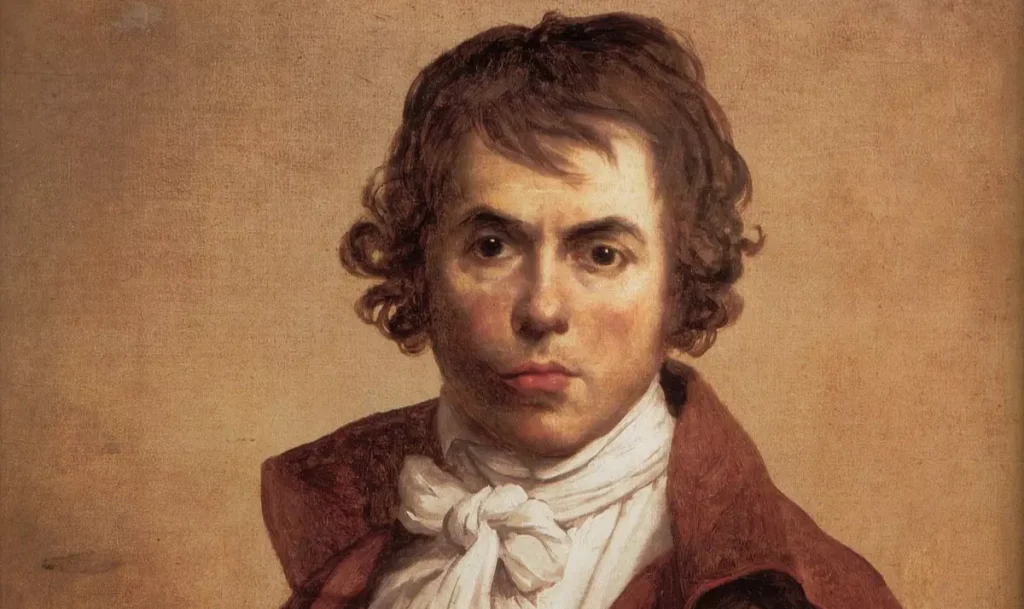
During the Reign of Terror, he was a member of the radical Jacobin faction and served on the Committee of General Security. However, after the fall of Robespierre in 1794, David fell out of favor and was briefly imprisoned.
After the Revolution, David regained his prominence as a painter under the reign of Napoleon Bonaparte. He became Napoleon’s official court painter and created several iconic portraits of the emperor. However, after Napoleon’s downfall, David went into exile in Brussels, where he continued to paint until his death on December 29, 1825.
Best Jacques-Louis-David artworks
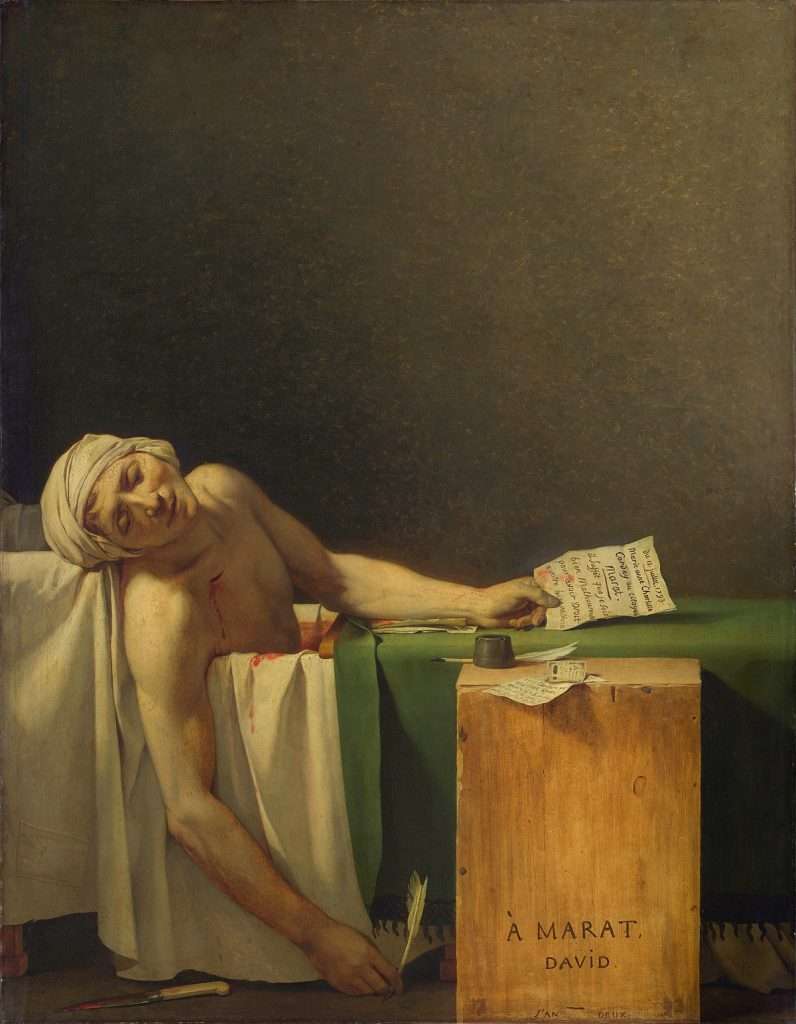
1. “The Death of Marat” (1793)
David created the painting as a tribute to Jean-Paul Marat, a prominent figure of the French Revolution who was assassinated in 1793 by Charlotte Corday, a supporter of the Girondins faction.
David, who was a fervent supporter of the revolution, sought to immortalize Marat as a martyr and hero of the revolution through this painting. It was intended to evoke sympathy and admiration for Marat’s revolutionary ideals and to serve as propaganda for the Jacobin cause.
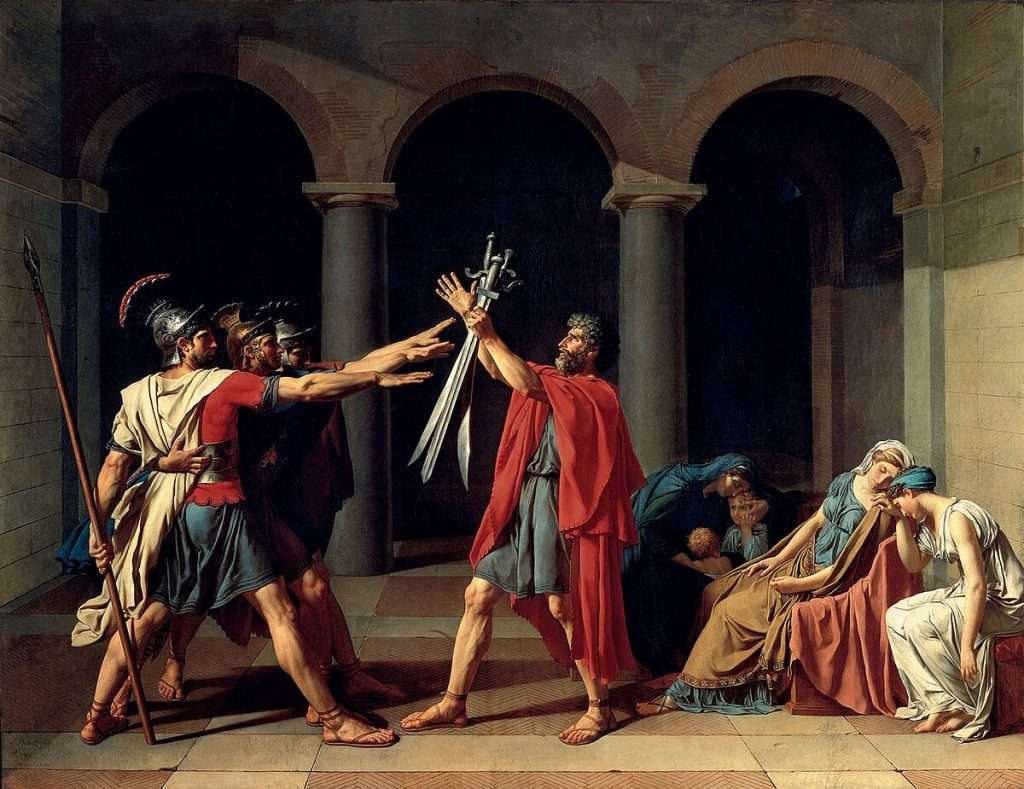
2. “The Oath of the Horatii” (1784)
“The Oath of the Horatii” was a commission from King Louis XVI of France for the royal palace of the Louvre. The painting depicts a scene from Roman history, specifically from the early days of the Roman Republic.
In the painting, three brothers from the Horatii family swear allegiance to Rome by raising their hands and swords in an oath-taking ceremony. Their father holds the swords out to them, symbolizing their duty to defend Rome against the neighboring city of Alba Longa.
David intended the painting to serve as a moral and political allegory, promoting the ideals of self-sacrifice and loyalty to the state. It also reflected the growing tensions in France leading up to the French Revolution, as it conveyed the message of putting the interests of the nation above personal allegiances.
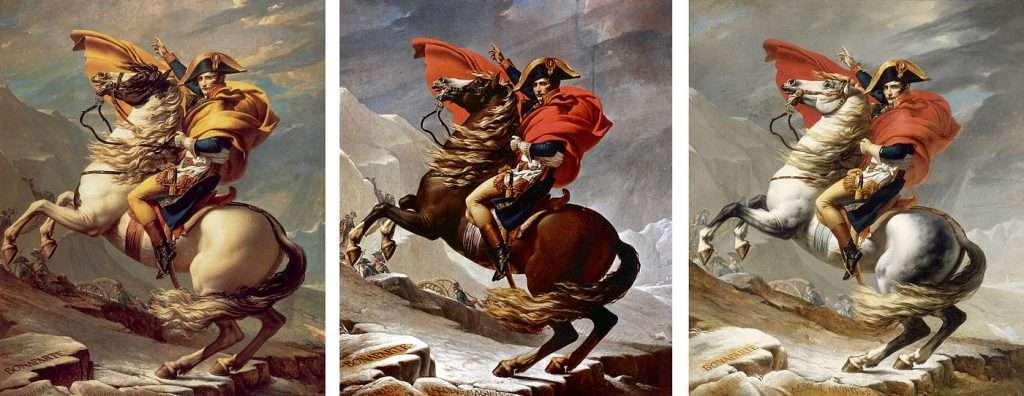
3. “Napoleon Crossing the Alps” (1801)
“Napoleon Crossing the Alps” is a series of five paintings depicting Napoleon Bonaparte’s famous crossing of the Alps during the Italian campaign of the French Revolutionary Wars. The most famous painting in the series is often referred to as “Napoleon Crossing the Alps at the St Bernard Pass,” completed in 1801.
The series was commissioned by Napoleon himself to commemorate his military achievements and to serve as propaganda for his regime. David portrayed Napoleon in a heroic and majestic light, emphasizing his leadership and determination. The series was meant to glorify Napoleon’s conquests and reinforce his image as a powerful and visionary leader.
The first version of the painting, completed in 1801, depicts Napoleon mounted on a fiery steed, leading his troops through the treacherous mountain terrain. The subsequent versions vary in composition and details but all convey the same message of Napoleon’s triumph and greatness.
These paintings became iconic images of Napoleon’s reign and were widely circulated to promote his image both domestically and abroad. They remain some of the most famous works of art associated with Napoleon Bonaparte, and probably the most famous painting by Jacques-Louis David.
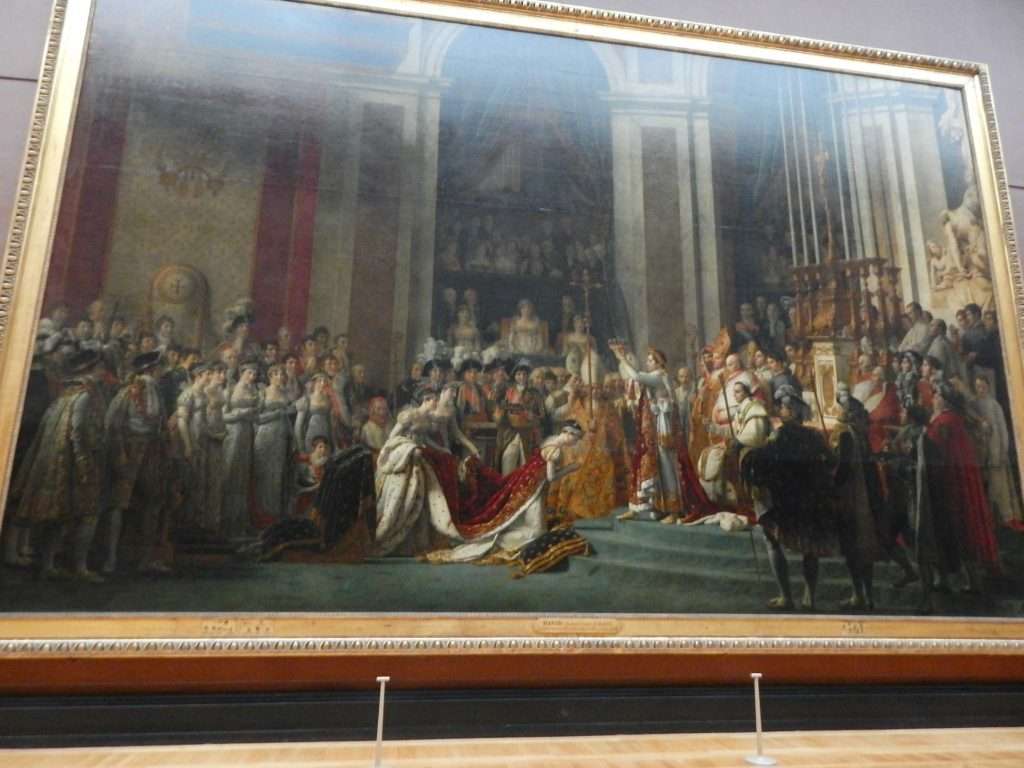
4. “The Coronation of Napoleon” (1807)
“The Coronation of Napoleon” is a monumental depicting the coronation of Napoleon Bonaparte and his wife Josephine at Notre-Dame Cathedral in Paris on December 2, 1804.
David was commissioned by Napoleon himself to create the painting, and it was intended to serve as propaganda for Napoleon’s regime, legitimizing his rule and emphasizing his power and authority. The painting portrays Napoleon crowning himself as Emperor of the French, while Josephine kneels before him to receive her crown.
The scene is filled with symbolism and references to classical and Christian iconography, reinforcing Napoleon’s connection to ancient rulers and his divine right to rule. David meticulously depicted the grandeur of the ceremony, including the elaborate costumes and regalia worn by Napoleon and Josephine, as well as the distinguished guests in attendance.
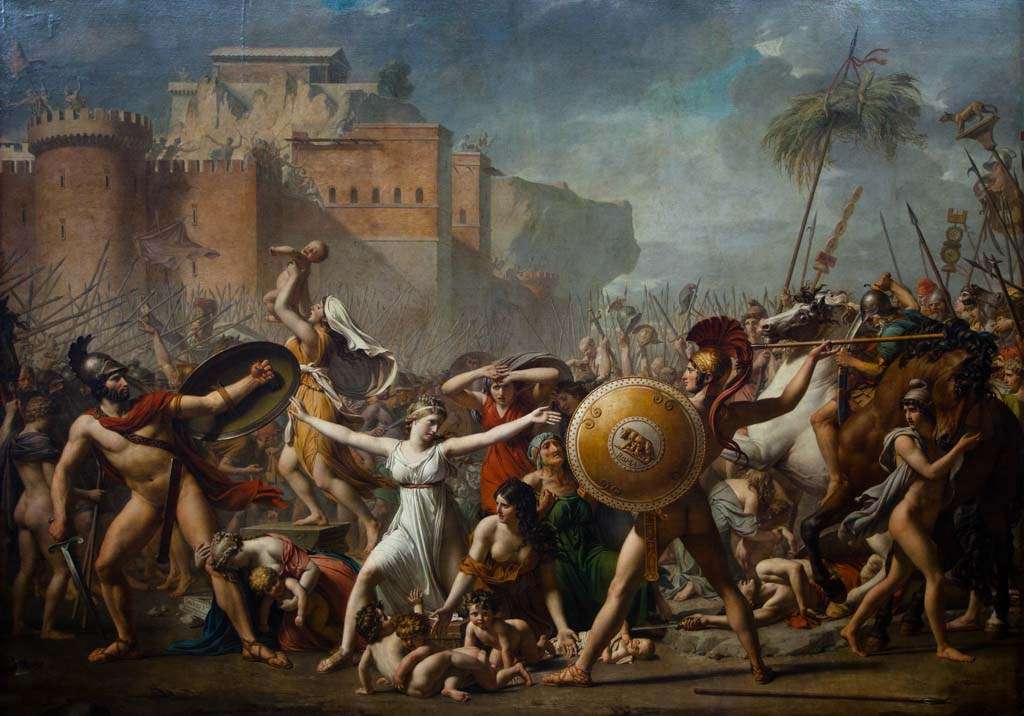
5. “The Intervention of the Sabine Women” (1799)
“The Intervention of the Sabine Women” depicts the legendary episode from Roman mythology in which the Romans, led by Romulus, abducted the women of the neighboring Sabine tribe to increase the population of Rome.
The painting portrays the moment when the Sabine women intervene to stop the conflict between the Romans and the Sabines, pleading with their husbands and fathers to end the violence.
David painted “The Intervention of the Sabine Women” as part of a series of works commissioned by the French government to commemorate key events from ancient Roman history. The series was intended to promote the virtues of patriotism, sacrifice, and reconciliation, and to celebrate the ideals of the French Revolution.
The painting is notable for its grand scale, dramatic composition, and powerful emotional resonance. It captures the tension and turmoil of the moment while also conveying a sense of hope and resolution. “The Intervention of the Sabine Women” remains one of the most famous paintings of neoclassical art and a masterpiece of David’s career.
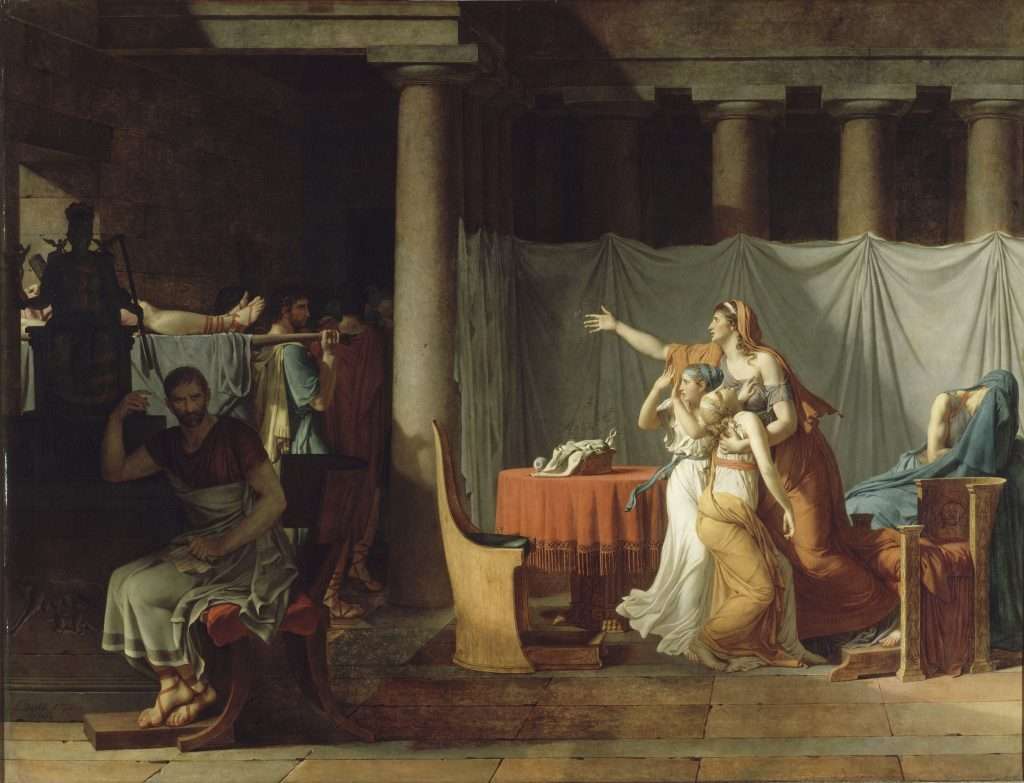
5. “The Lictors Bring to Brutus the Bodies of His Sons” (1789)
The painting depicts the Roman consul Lucius Junius Brutus receiving the bodies of his sons after they were executed for plotting against the newly established Roman Republic.
This painting is part of a series of works by David that depict key moments from ancient Roman history. The series, known as the “Horatii and Curiatii” series, was commissioned by King Louis XVI of France and was intended to convey moral and political lessons to the French public.
The series draws parallels between the virtues and sacrifices of ancient Rome and the contemporary political situation in France. David used these paintings to promote republican ideals and to emphasize the importance of loyalty to the state above personal allegiances.
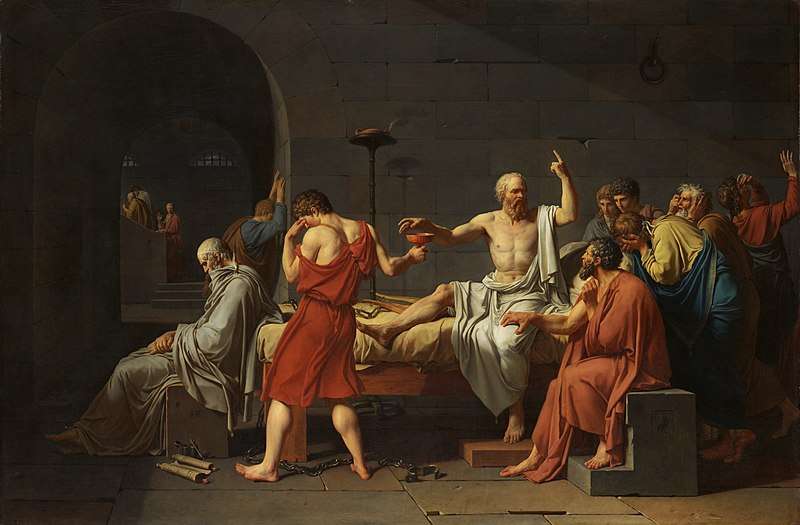
6. “The Death of Socrates” (1787)
Even if you are not an art lover, I bet you know this one! “The Death of Socrates” is one of the most famous paintings by Jacques-Louis David, it has become popular in the past years because of the meme.
It depicts the scene of the Greek philosopher Socrates drinking poison hemlock as he faces his execution in Athens in 399 BC. Socrates had been convicted of corrupting the youth and impiety, charges he faced due to his philosophical teachings and questioning of traditional beliefs.
David painted “The Death of Socrates” as part of a series of works inspired by ancient Greek and Roman history and philosophy. These works were commissioned by prominent patrons and were intended to convey moral and political lessons to the public.
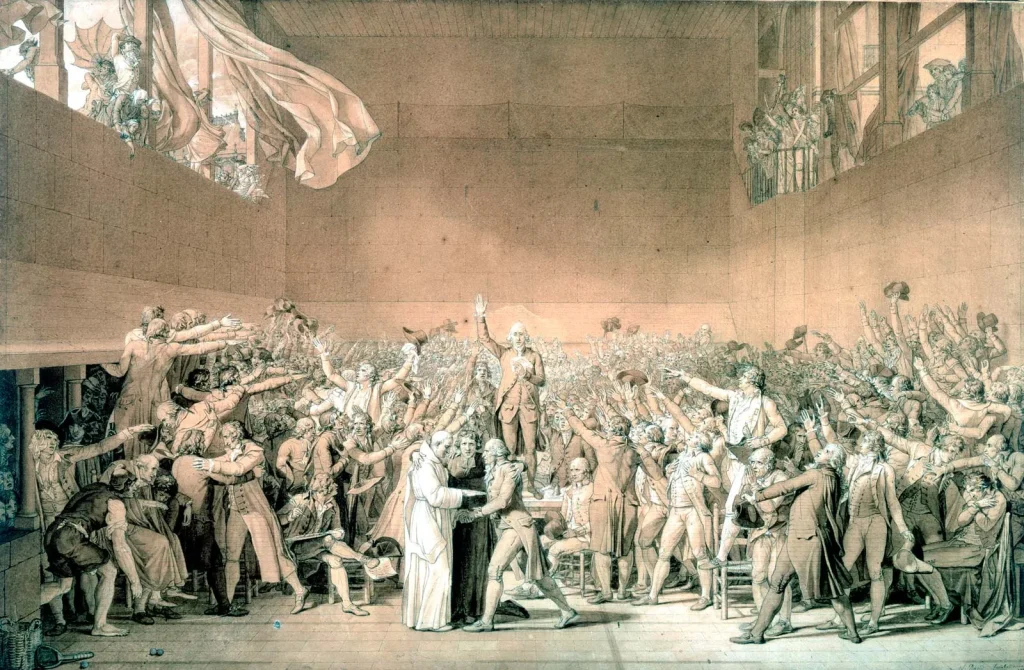
7. “The Tennis Court Oath” (1791)
In “The Tennis Court Oath”, Jacques-Louis David depicts a pivotal moment during the early stages of the French Revolution when members of the Third Estate, representing the common people, gathered at a tennis court in Versailles and took an oath not to disband until a new constitution was established.
David painted “The Tennis Court Oath” as a powerful symbol of the people’s determination to bring about political change and to challenge the absolute power of the monarchy. The painting captures the intensity and unity of the moment as the participants raise their hands in solidarity, pledging their allegiance to the cause of liberty.
“The Tennis Court Oath” remains one of the most iconic images of the French Revolution, and is now on display at the Musée Carnavalet.
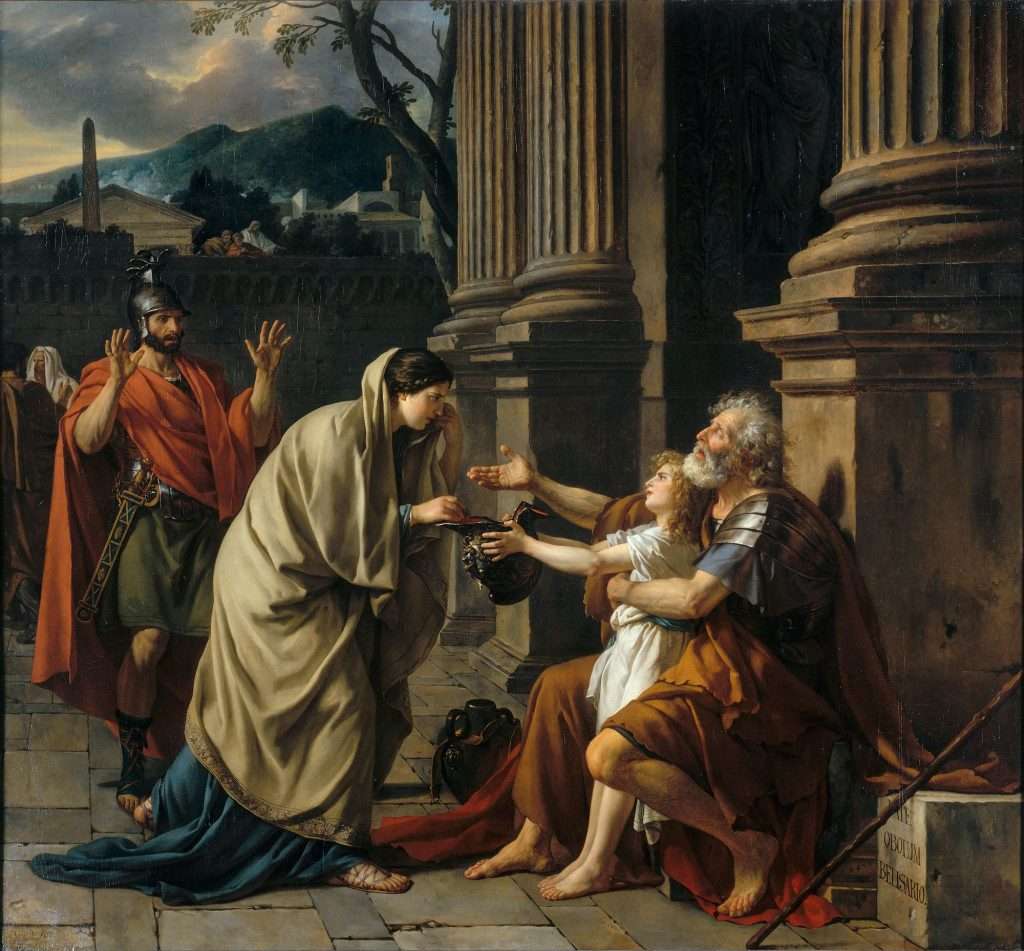
8. “Belisarius Begging for Alms” (1781)
In this painting Jacques-Louis David depicts the Roman general Belisarius, who served under the Byzantine Emperor Justinian I, begging for alms on the streets of Constantinople. Belisarius had been unjustly accused of treason and stripped of his wealth and honors by the emperor.
David painted “Belisarius Begging for Alms” as a poignant portrayal of the fallen hero. The painting served as a reminder of the dangers of political intrigue and the importance of justice and compassion in governance.
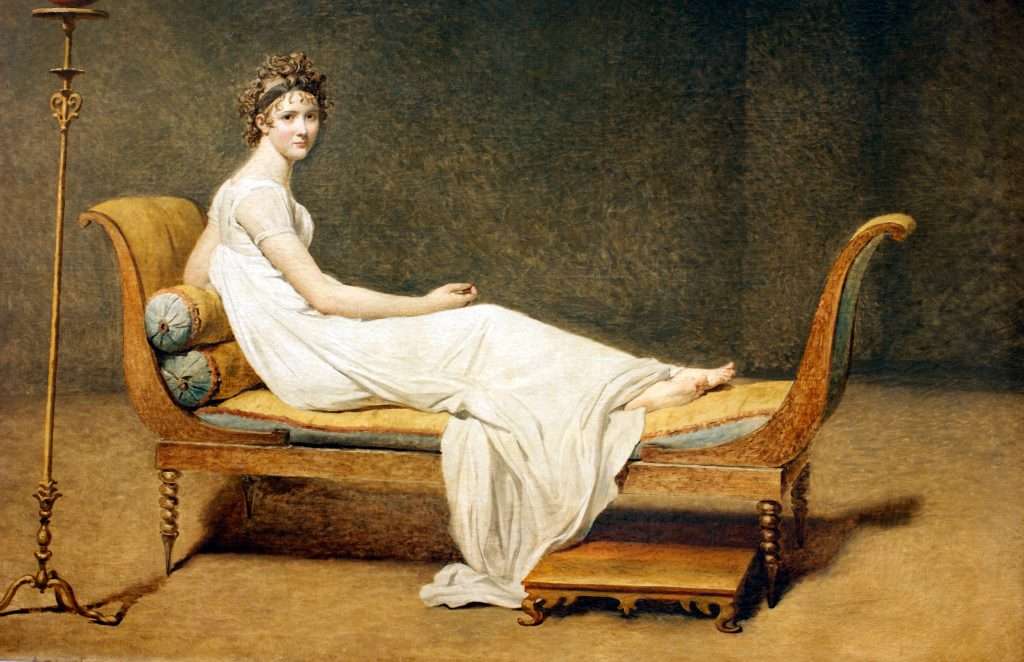
9. “Portrait of Madame Récamier” (1800)
This unfinished portrait depicts Madame Juliette Récamier, a prominent French socialite, salon hostess, and patron of Arts, reclining on a sofa, draped in classical-inspired clothing, with a serene and enigmatic expression on her face.
David intended to capture the essence of beauty and the ideals of femininity when he started this project but stopped working on it after he learned that Madame Récamier had requested his student to paint her portrait after growing impatient with David. The picture was acquired by the Louvre Museum in 1826.
Conclusion
In conclusion, Jacques-Louis David is not only a great example of the neoclassical movement but also serves as a collection of historical records, registering key moments in the history of the world such as the French Revolution and the Napoleonic Era.
Now that you have learned about the best paintings by Jacques-Louis David, why don’t you take a look at this post about Leonardo Da Vinci and his best paintings, and the best paintings by Delacroix?
Read More:





